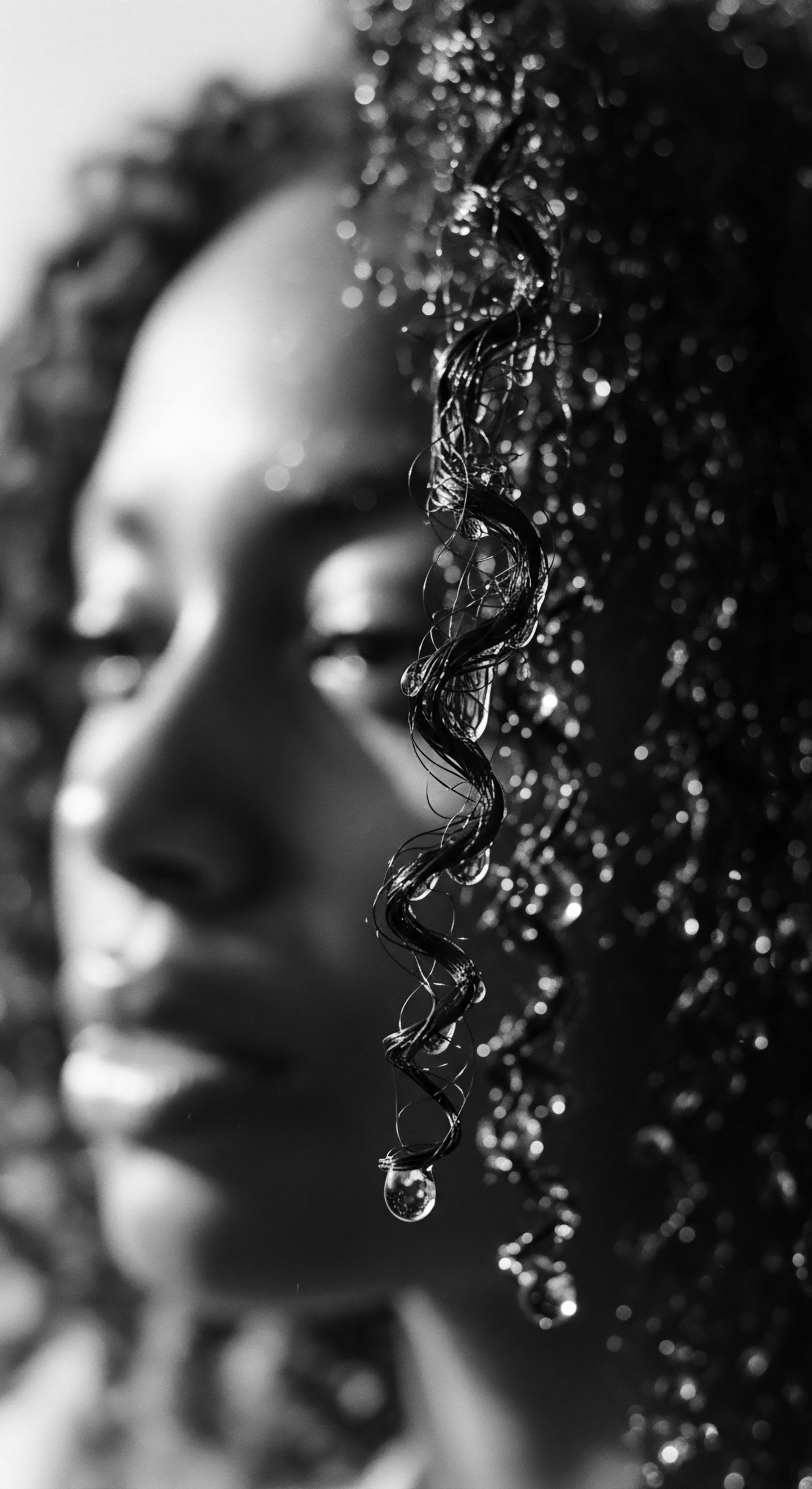
Fundamentals
The very concept of altering one’s hair color, an act as old as humanity itself, speaks to a deeply rooted desire for change, expression, and connection. At its simplest, the hair dye represents a substance or compound applied to strands to change their intrinsic hue. This transformation may range from subtle shifts in tone to a complete metamorphosis of shade, driven by a myriad of motivations both personal and communal. The fundamental purpose of such an application is to impart a new pigment to the hair fibers, moving beyond their natural endowment.
This definition, though straightforward, scarcely scratches the surface of the phenomenon that is hair dye. It is an explanation that points to a primary function, a description of an agent initiating a visual change. Yet, even in this basic interpretation, there exists an echo of ancient practices.
Our ancestors, observant of the natural world, discovered that certain elements held the power to stain and shift colors, not only in textiles but also on the human form. This early comprehension of coloration marked the genesis of hair dye as we understand it today, a quiet, elemental beginning.
The application of external substances to hair to modify its appearance has always held a place in human societies. It reflects a primal connection to adornment, a wish to signify belonging or distinction. This designation, this statement of intent, has long been a part of our shared human story.
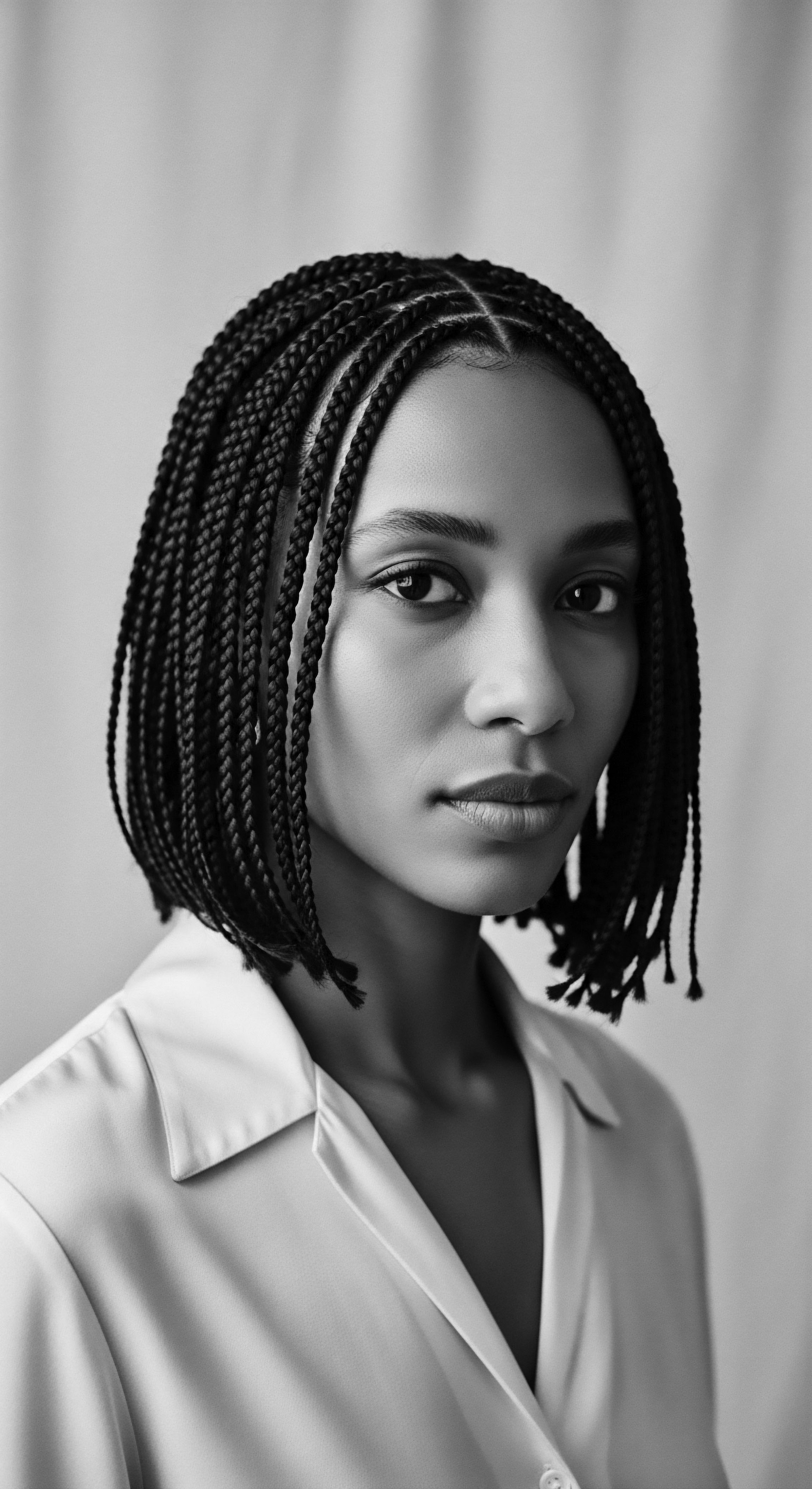
Ancient Whispers of Color
Long before the advent of modern chemistry, humanity discerned the potential within nature’s palette to transform hair. Early civilizations, guided by an intuitive understanding of their surroundings, experimented with materials from the earth and its bounty. These first forays into altering hair’s shade were often intertwined with daily life, spiritual beliefs, and social hierarchies. The earliest iterations were not merely cosmetic interventions; they were deeply embedded within ancestral practices, expressions of identity, or marks of passage.
Across continents, the knowledge of plants, minerals, and other organic matter was meticulously passed through generations. Leaves, barks, roots, and even insects yielded astonishing spectrums of color. The preparation of these elemental concoctions was a ritual in itself, a testament to patience and a respect for nature’s offerings. It was a time when the very act of preparing a hair colorant was a tender thread connecting individuals to the wisdom of their forebears.

Why We Seek Change
The impulse to change one’s hair color stems from various wellsprings, each carrying its own weight of personal and collective meaning. Sometimes, the intention is simply to mask the silver strands that herald the passage of time, a common desire found across many cultures. For others, it presents an opportunity to express individuality, to voice a unique aspect of their selfhood in a visibly striking manner.
There are instances where hair coloration serves as a symbolic act, perhaps marking a significant life event, a transition, or even a form of quiet rebellion. It might be a declaration of renewed spirit or a playful exploration of identity. The shift in hair hue can signify an alignment with a particular group, a departure from an old self, or an arrival into a newly perceived one. This inherent human drive to signify, to communicate through personal presentation, has always found a potent medium in the crown we wear.

Intermediate
Moving beyond the initial understanding of hair dye as a simple colorant, we begin to appreciate its meaning as a sophisticated agent influencing the hair’s very structure. Hair dye, at this intermediate level of comprehension, signifies more than a mere surface coating. It represents a process involving a delicate interaction between external compounds and the intrinsic biology of hair, particularly its protein matrix and natural pigment. The intention behind its use often expands here, encompassing considerations of longevity, intensity, and the specific chromatic effect sought.
This elucidation demands an acknowledgment of the distinct categories into which hair dyes fall, each operating with varying degrees of permanence and chemical intervention. The clarification of these types provides a clearer delineation of how different formulations achieve their desired results, offering a more precise interpretation of their function.
Hair dye, at its core, represents a deliberate chemical or natural alteration of hair’s intrinsic pigment, reflecting both individual desires and ancestral connections to adornment.

The Spectrum of Pigment Play
Hair dyes manifest in diverse forms, each designed to interact with hair in a unique manner. Understanding these distinctions provides a richer perspective on their capabilities and appropriate uses.
- Temporary Dyes ❉ These formulations deposit color molecules on the hair’s outer cuticle layer. They typically do not penetrate the hair shaft, allowing for a fleeting transformation that washes away with a single shampoo. Often vibrant and bold, these options present a low-commitment avenue for visual experimentation.
- Semi-Permanent Dyes ❉ With a slightly more enduring effect, semi-permanent dyes infiltrate the outermost layers of the hair shaft. They do not involve oxidation or permanent chemical changes, fading gradually over several washes. These provide a gentle introduction to color modification, allowing for changes that last a few weeks.
- Demi-Permanent Dyes ❉ These formulations offer a longer-lasting color change, usually sans ammonia, but do utilize a low-volume developer to open the cuticle slightly. They deposit color into the hair’s outer cortex, gradually washing out over 4-6 weeks without creating a harsh line of demarcation.
- Permanent Dyes ❉ These represent the most significant chemical transformation. They necessitate an alkaline agent, often ammonia or a derivative, to swell the hair cuticle, permitting oxidative dyes and a developer (hydrogen peroxide) to penetrate the cortex. Inside, these precursors react and polymerize, creating larger color molecules that become trapped within the hair, offering a lasting, often irreversible, color alteration. This category provides the most complete coverage, particularly for grey hair, and the broadest range of shade possibilities.

A Glimpse into Hair’s Structure
To truly appreciate how hair dye functions, one gains benefit from a basic understanding of hair’s biological composition. Each strand of hair is a complex marvel, a testament to elemental biology. At its outermost layer resides the Cuticle, a protective shingle-like structure. Beneath this lies the Cortex, which comprises the majority of the hair’s mass and houses the natural pigment granules, known as Melanin.
There are two primary types of melanin ❉ Eumelanin, responsible for black and brown shades, and Pheomelanin, which lends red and yellow tones. The ratio and density of these melanins dictate an individual’s innate hair color. The innermost layer, the Medulla, is not always present and its role in hair color alteration is less direct.
Hair dyes interact with these components in varying ways. Temporary dyes merely cling to the cuticle, while more permanent options reach into the cortex to alter the melanin itself or introduce new pigment. This microscopic interaction, a quiet dance between chemistry and biology, defines the very efficacy of the hair dye.

Early Alchemies of Adornment
The story of hair dye finds deep roots in antiquity, reaching back to times when empirical observation and natural resources were the sole tools for transformation. Ancestral societies, possessing a profound knowledge of their local flora and mineral deposits, developed intricate practices to modify their hair’s hue. This historical context provides an essential framework for understanding the profound cultural significance ascribed to hair coloration across diverse communities.
Consider the ancient Egyptians, who harnessed the power of Henna (Lawsonia inermis), a plant-based dye derived from dried and powdered leaves. Henna, known for its reddish-brown staining properties, was applied not only to hair but also to skin and nails, carrying ceremonial and beautifying import. This use of natural substances for both aesthetic and symbolic purposes represents an early, sophisticated form of hair dye application, revealing a reverence for plant wisdom and a mastery of its potential. Similarly, other civilizations utilized materials such as Indigo for darker shades, or various mineral earths for unique chromatic effects.
The methodologies were labor-intensive, often involving long preparation times and communal application rituals, embedding the act of hair dyeing into the social fabric of these communities. These historical practices serve as powerful reminders that the desire to alter one’s hair color is not a modern invention, but an enduring human expression.

Academic
The academic understanding of hair dye transcends a mere chemical formulation, recognizing its profound implications across biology, cultural anthropology, sociology, and the very construction of identity. At this advanced level, hair dye is defined as a complex chemical or natural system engineered to induce a semi-permanent or permanent alteration of the hair’s endogenous melanin pigment, or to impart an exogenous colorant to the hair fiber, with effects extending from the follicular cuticle through the cortex. This process, whether through oxidative reactions, metallic salt deposition, or direct dye application, embodies a delicate equilibrium of molecular science, yet its meaning stretches far beyond chemical equations. It represents a living artifact within the vast archive of human self-expression, particularly within the heritage of textured hair, where its use has been a testament to resilience, adaptability, and cultural continuity.
The intricate mechanisms by which these colorants interact with the unique architecture of textured hair—characterized by its elliptical cross-section, tighter curl patterns, and varying cuticle configurations—demand specialized consideration. The scientific exploration here must align with a profound understanding of its cultural ramifications, acknowledging that the chemical journey of hair dye is inseparable from the human stories it narrates.
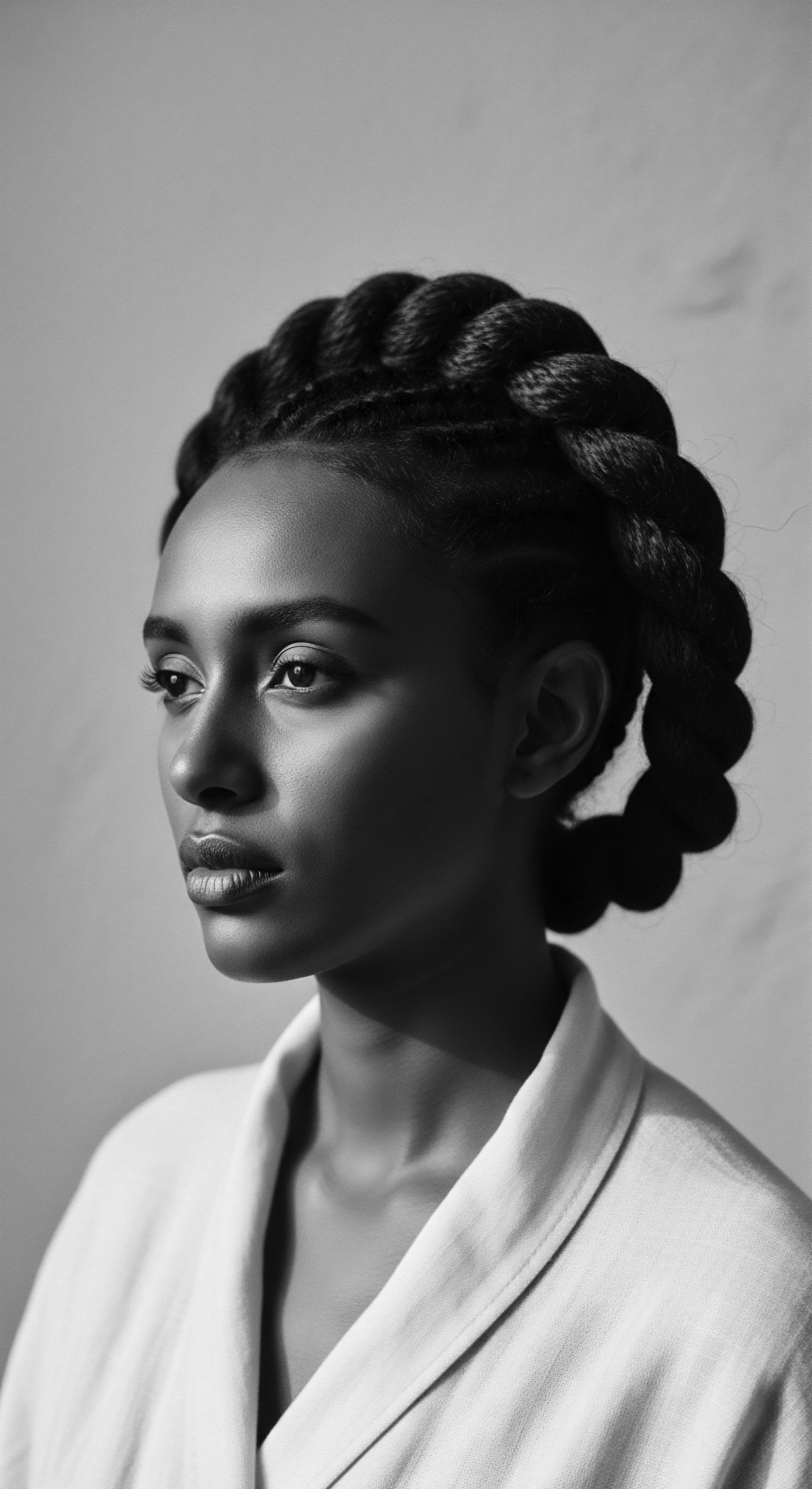
The Chromatic Language of Identity
Hair dye, in an academic sense, is a powerful semiotic agent, a non-verbal language that articulates individual and collective identities. Its interpretation extends to both its physical transformation of hair and its symbolic resonance within societal frameworks. The substance itself, whether derived from millennia-old botanical sources or synthesized in a laboratory, functions as a conduit for self-actualization, rebellion, assimilation, or tradition. This designation encompasses the entirety of its journey, from its elemental origin to its nuanced social consequences.
Its significance deepens when examined through the lens of Black and mixed-race hair experiences. For these communities, hair coloration has rarely been a superficial act. It often carries the weight of historical pressures, the legacy of imposed beauty standards, and the reclaiming of ancestral aesthetics. The very act of choosing a shade, or of adhering to traditional pigmenting practices, provides a compelling statement.

Echoes from the Source ❉ Pigments of Ancestry
The lineage of hair coloring reaches back into the deep past, where indigenous populations across Africa honed sophisticated methods using the earth’s natural bounty. These ancestral practices were not simply about aesthetics; they were interwoven with spiritual beliefs, social status, and rites of passage. The knowledge of which plants and minerals could yield specific hues was a guarded wisdom, passed through oral traditions and hands-on teaching across generations.
Consider the widespread historical application of Henna (Lawsonia inermis) and Indigo (Indigofera tinctoria) in regions of North and West Africa. Henna, yielding a range of red to brown tones, was valued not only for its coloring properties but also for its perceived conditioning benefits for the hair and scalp. The deep blues and blacks derived from indigo provided a stark contrast, often combined with henna to achieve richer, darker shades, reflecting a sophisticated understanding of natural dyeing techniques (Matike, 2010). These plant-based colorants were often prepared with various oils or acidic components to enhance their adherence and color development, demonstrating an empirical mastery of material science within a traditional context.
Beyond these well-known botanicals, diverse African communities utilized a spectrum of locally available resources:
- Red Ochre ❉ Finely ground iron-rich clays, often mixed with animal fats or aromatic resins, created vibrant reddish-brown pastes. These were applied for both cosmetic and protective purposes, particularly against harsh sun and insects.
- Charcoal and Ash ❉ For deeper, more intense black hues, pulverized charcoal or specific types of plant ash were incorporated into hair preparations, sometimes to darken hair or to create striking contrasts in braided styles.
- Plant Extracts ❉ Various barks, leaves, and berries from local flora were crushed, boiled, or fermented to extract pigments, offering a diverse palette of natural colors that varied by region and season.
The Himba people of Namibia offer a profound contemporary illustration of this ancestral wisdom. For Himba women, the characteristic reddish-orange hue of their hair and skin is achieved through daily application of Otjize, a paste composed of ground red ochre pigment, butterfat, and aromatic resins. This practice is not merely cosmetic; it is a central pillar of their identity, a symbol of beauty, purity, and a deep connection to the earth’s life-giving essence and the essence of blood. The intricate braided hairstyles, lengthened with goat hair or plant fibers and coated in otjize, indicate age, marital status, and social standing within the community.
This tradition powerfully underscores how hair coloration, rooted in indigenous knowledge, can encapsulate a complex system of cultural values and ancestral practices, affirming identity in the face of environmental challenges and external influences. It showcases a sustained engagement with natural materials that science now validates for their protective qualities, offering intrinsic sun protection alongside profound cultural significance.
The Himba’s otjize tradition epitomizes how ancient practices of hair coloring serve as living archives of cultural identity and ancestral wisdom, offering both aesthetic beauty and practical protection.
These methods represent not only the earliest forms of hair dye but also a holistic approach to hair care, where the ingredients often possessed conditioning, medicinal, or protective properties alongside their coloring effects. This deep understanding, gleaned from generations of observation and experimentation, laid the groundwork for all subsequent developments in hair color technology.
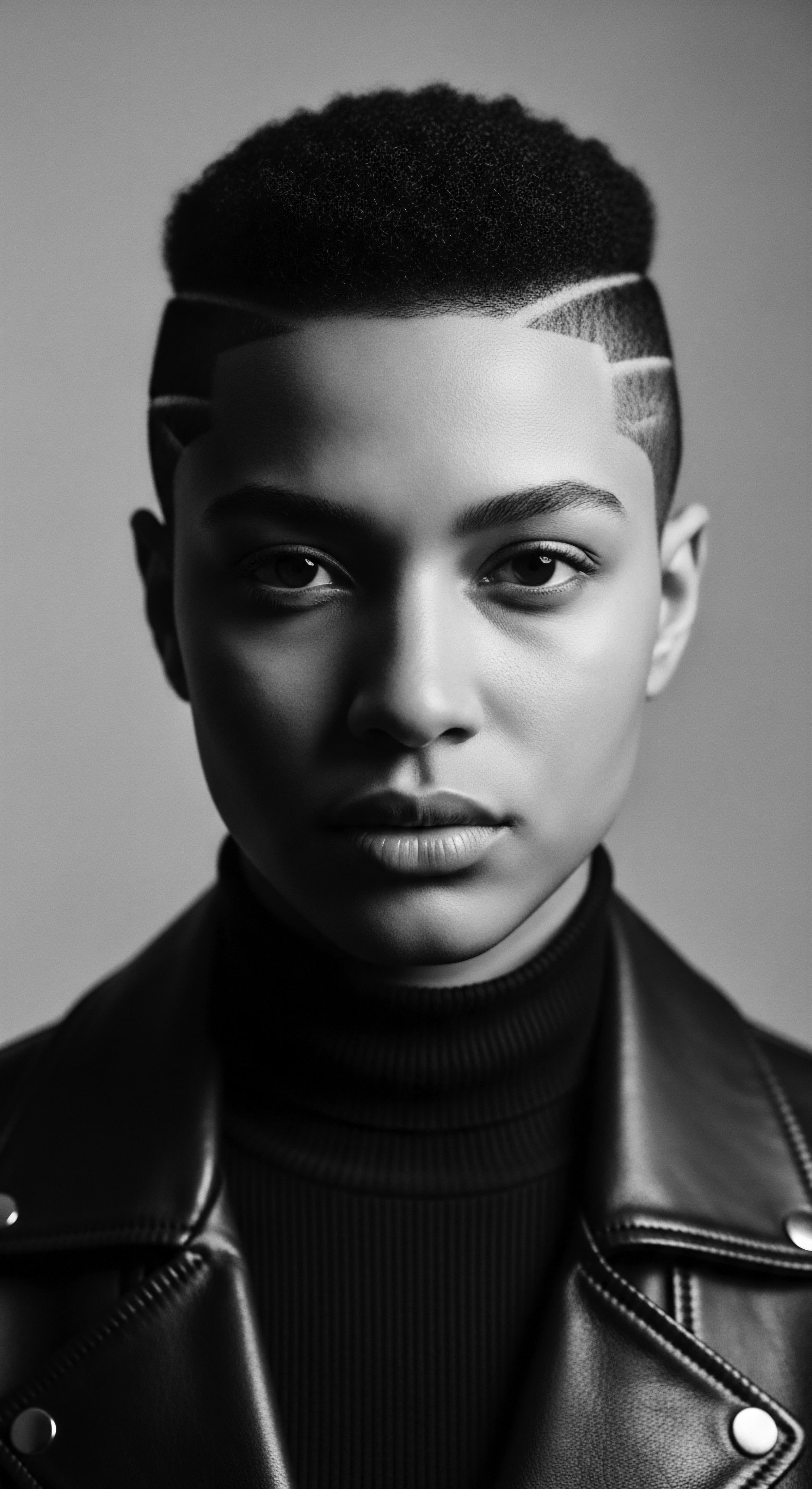
The Tender Thread ❉ Colonial Legacies and Resistance through Color
The arrival of colonialism cast a long, often oppressive shadow over indigenous hair practices, including the ancestral ways of hair coloration. European beauty standards, privileging straight hair textures and lighter complexions, were systematically imposed, leading to the widespread disparagement of Black and mixed-race hair. This era brought about a profound shift in the meaning and practice of hair alteration within diasporic communities. Hair dye, in this context, became entangled with complex narratives of survival, assimilation, and profound resistance.
Forced shaming and the literal shaving of heads during the transatlantic slave trade symbolized a brutal erasure of identity and cultural connection for captured Africans. Post-emancipation, the societal pressure to conform to Eurocentric ideals often led to the adoption of hair straightening methods, such as the hot comb and chemical relaxers. These methods, while offering a semblance of social acceptance or professional opportunity, often inflicted physical damage to the hair and scalp, and psychologically perpetuated a “good hair” versus “bad hair” dichotomy, where “good hair” approximated Caucasian textures.
Within this challenging landscape, hair dye sometimes served as a tool for perceived integration, a means to soften or shift natural hues to align with dominant aesthetics. Yet, even in these acts of adaptation, a quiet strength persisted. The very ingenuity required to manage and style textured hair under duress, whether through traditional braiding, coiling, or the careful application of available colorants, testified to an enduring spirit.
The mid-20th century, particularly during the Civil Rights and Black Power movements, witnessed a powerful resurgence of natural hair as a symbol of racial pride and political affirmation. The embrace of the Afro, dreadlocks, and braids represented a direct rejection of imposed beauty norms. In this era, hair color choices within these natural styles often became intentional declarations of identity.
Some chose to enhance their natural dark tones, while others experimented with vibrant, non-traditional colors, a bold expression of artistic freedom and self-determination. This period illuminates how hair dye, whether natural or synthetic, was repurposed from a tool of assimilation into a vibrant canvas for cultural reassertion, demonstrating agency in the face of historical pressures.
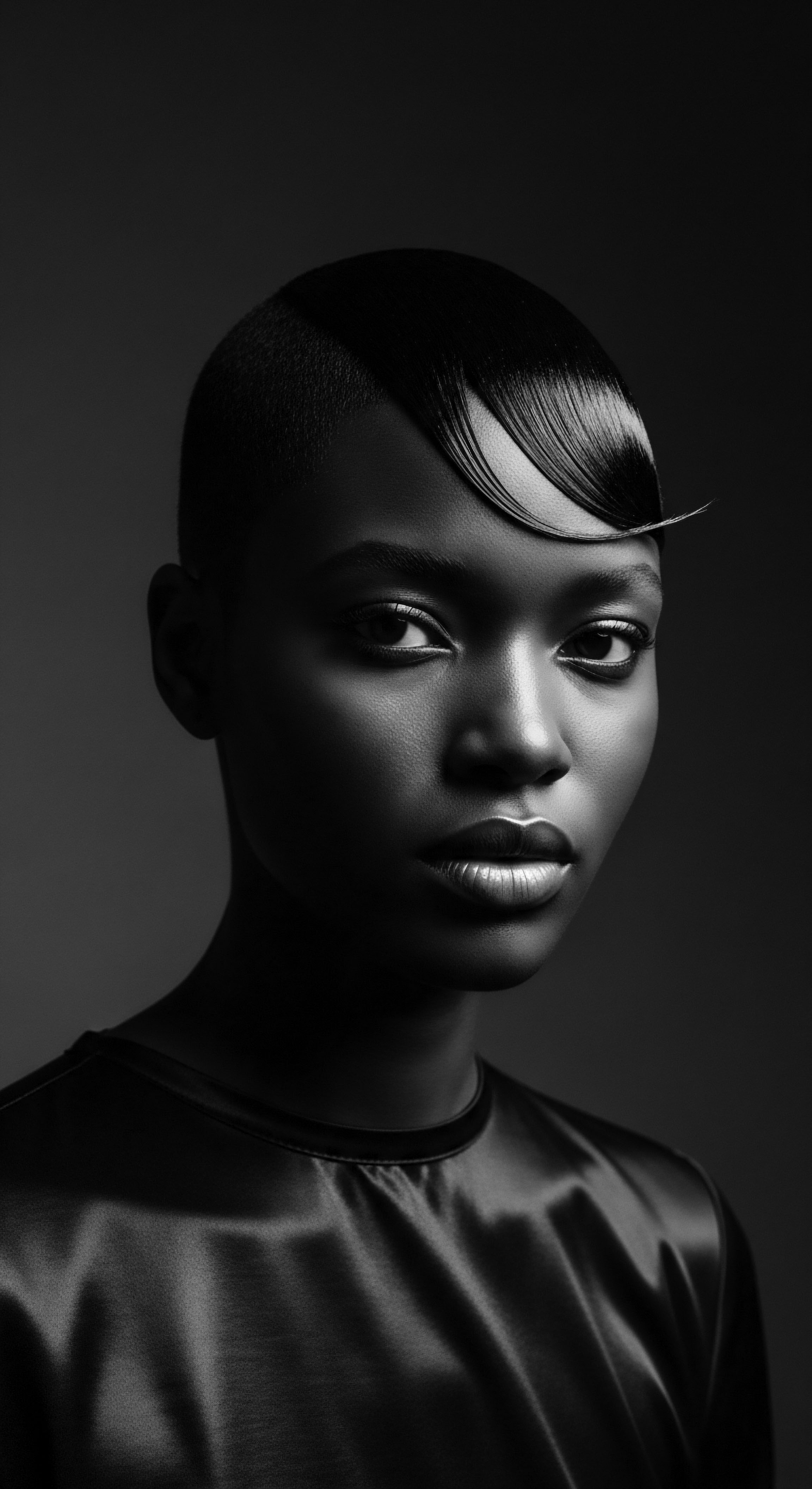
The Unbound Helix ❉ Navigating Modern Formulations
Contemporary hair dye technology has branched into a myriad of formulations, each designed to achieve specific chromatic outcomes while considering hair health. The core chemical principles behind permanent hair coloring involve an oxidative process. This means that an alkalizing agent, commonly ammonia or a monoethanolamine derivative, opens the hair’s cuticle, enabling the smaller color precursors to permeate the cortex.
Inside the cortex, these precursors react with an oxidizer, typically hydrogen peroxide, to form larger, colored molecules that become entrapped within the hair fiber, yielding a lasting color change. This intricate chemical transformation fundamentally alters the hair’s natural pigmentation.
For textured hair, the structural nuances present distinct challenges and considerations in this chemical process. The tighter curl patterns and often denser cuticle layers can influence dye penetration and color uptake. Moreover, textured hair, due to its unique shape, can be more prone to dryness and fragility, making the choice of dye formulation and post-coloring care particularly important. Products specifically designed for textured hair often include conditioning agents, lower ammonia levels, or alternative alkalizers to minimize potential damage, preserving the hair’s delicate moisture balance and structural integrity.
The industry continues to innovate, developing formulations with botanically derived ingredients, ammonia-free options, and advanced conditioning systems. These advancements seek to bridge the gap between effective color transformation and the preservation of hair health, a goal that resonates deeply with the ancestral wellness principles that have historically guided textured hair care. Understanding the science enables informed choices, ensuring that beauty practices align with the deep respect for hair’s inherent vitality.
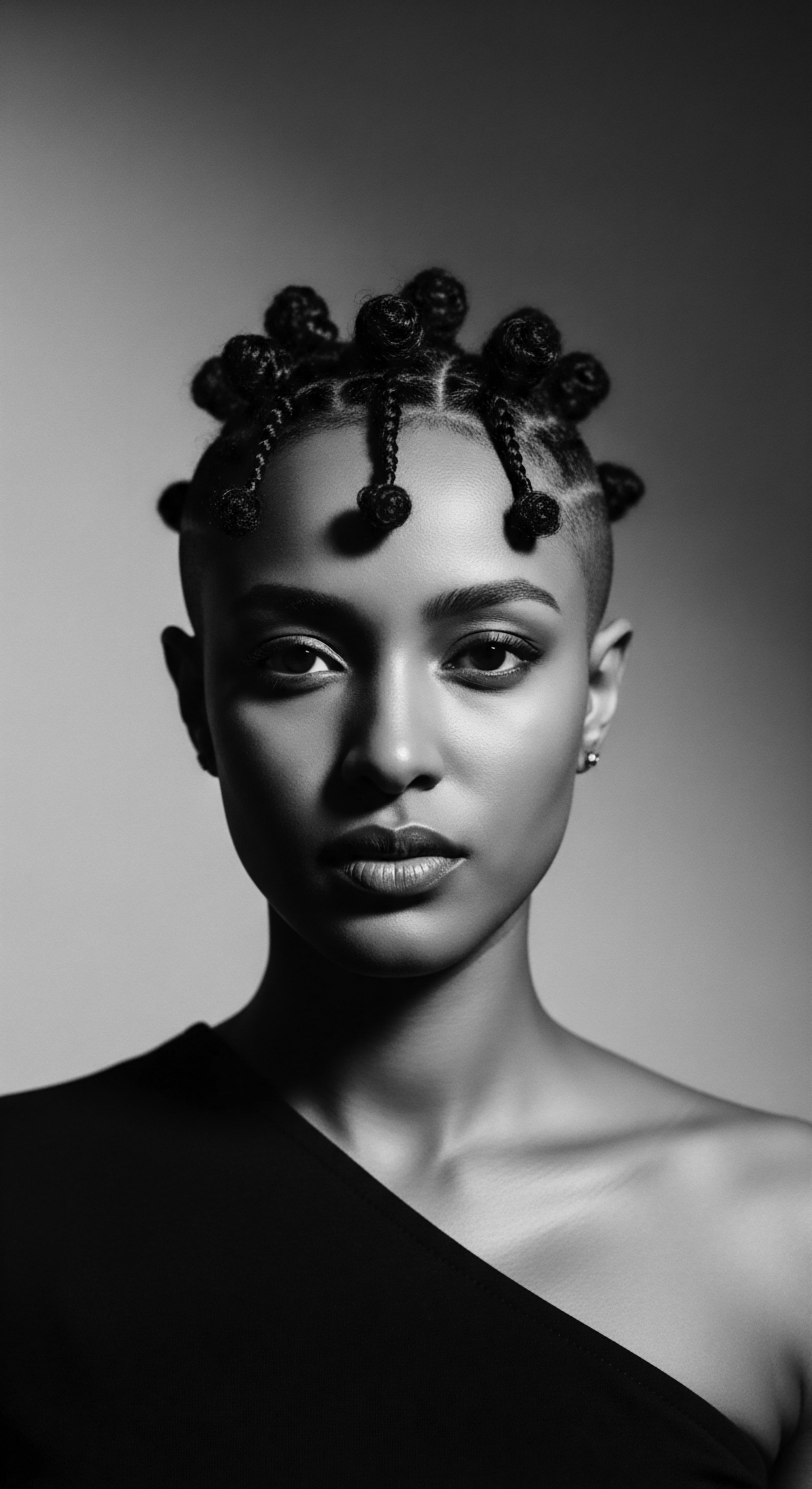
The Psychology of Shade ❉ Hair Color, Selfhood, and Community
The decision to alter one’s hair color is rarely a trivial one; it holds profound psychological and sociological significance, particularly within communities shaped by intricate hair narratives. Hair color can serve as a powerful external manifestation of internal states, aspirations, or affiliations. For individuals with textured hair, this connection to selfhood is amplified by a history where hair has been a battleground for identity and acceptance.
The psychology underpinning color choice can range from the pursuit of aesthetic pleasure to a deeper exploration of self-identity. A change in hair color might signal a desire for a new beginning, a response to a life transition, or an act of self-redefinition. For some, it represents an assertion of agency, a visible declaration of autonomy over one’s appearance in a world that has historically sought to dictate it. The selection of a vibrant, unconventional shade might convey a rebellious spirit, while a choice to enhance natural dark tones could signify a rootedness in heritage and a celebration of innate beauty.
The communal aspect of hair color choices among Black and mixed-race individuals cannot be overstated. Shared experiences around hair care, the challenges of navigating Eurocentric beauty standards, and the triumphs of collective self-acceptance contribute to a unique group dynamic. Hair salons and styling spaces often serve as vital community hubs, where discussions about hair color, texture, and cultural significance unfold.
These environments foster a sense of shared understanding and affirmation, reinforcing the idea that hair choices, including coloration, are deeply personal acts that resonate with collective history and identity. The dialogue surrounding hair color thus becomes a barometer of evolving self-perception and cultural pride within these vibrant communities.
| Aspect Primary Pigment Source |
| Traditional/Ancestral Approach Plant-based dyes (henna, indigo), mineral clays (ochre), vegetable extracts. |
| Modern Commercial Approach Synthetic chemical compounds (para-phenylenediamine, ammonia, hydrogen peroxide). |
| Aspect Hair Interaction |
| Traditional/Ancestral Approach Coats the cuticle, subtly stains outer cortex, or adheres to the surface; often strengthens hair through natural tannins and proteins. |
| Modern Commercial Approach Penetrates the cortex by swelling the cuticle, chemically altering or replacing natural melanin. |
| Aspect Application Method |
| Traditional/Ancestral Approach Labor-intensive pastes, powders mixed with water/oils; communal application rituals; often sun-activated. |
| Modern Commercial Approach Creams, gels, foams; often at-home or salon application; chemical activation. |
| Aspect Longevity |
| Traditional/Ancestral Approach Temporary to semi-permanent; fades gradually with washes; can be cumulative with repeated use. |
| Modern Commercial Approach Semi-permanent to permanent; washes out gradually or remains until hair grows out or is re-colored. |
| Aspect Cultural Significance |
| Traditional/Ancestral Approach Deeply embedded in social status, spiritual practices, rites of passage, community bonding, natural protection. |
| Modern Commercial Approach Personal expression, trend adherence, gray coverage, professional presentation; often reflects individual agency and evolving beauty standards. |
| Aspect The evolving landscape of hair coloring, from ancient ochre to contemporary chemical dyes, reflects humanity's continuous quest for self-expression and care, always echoing the wisdom of diverse hair heritages. |
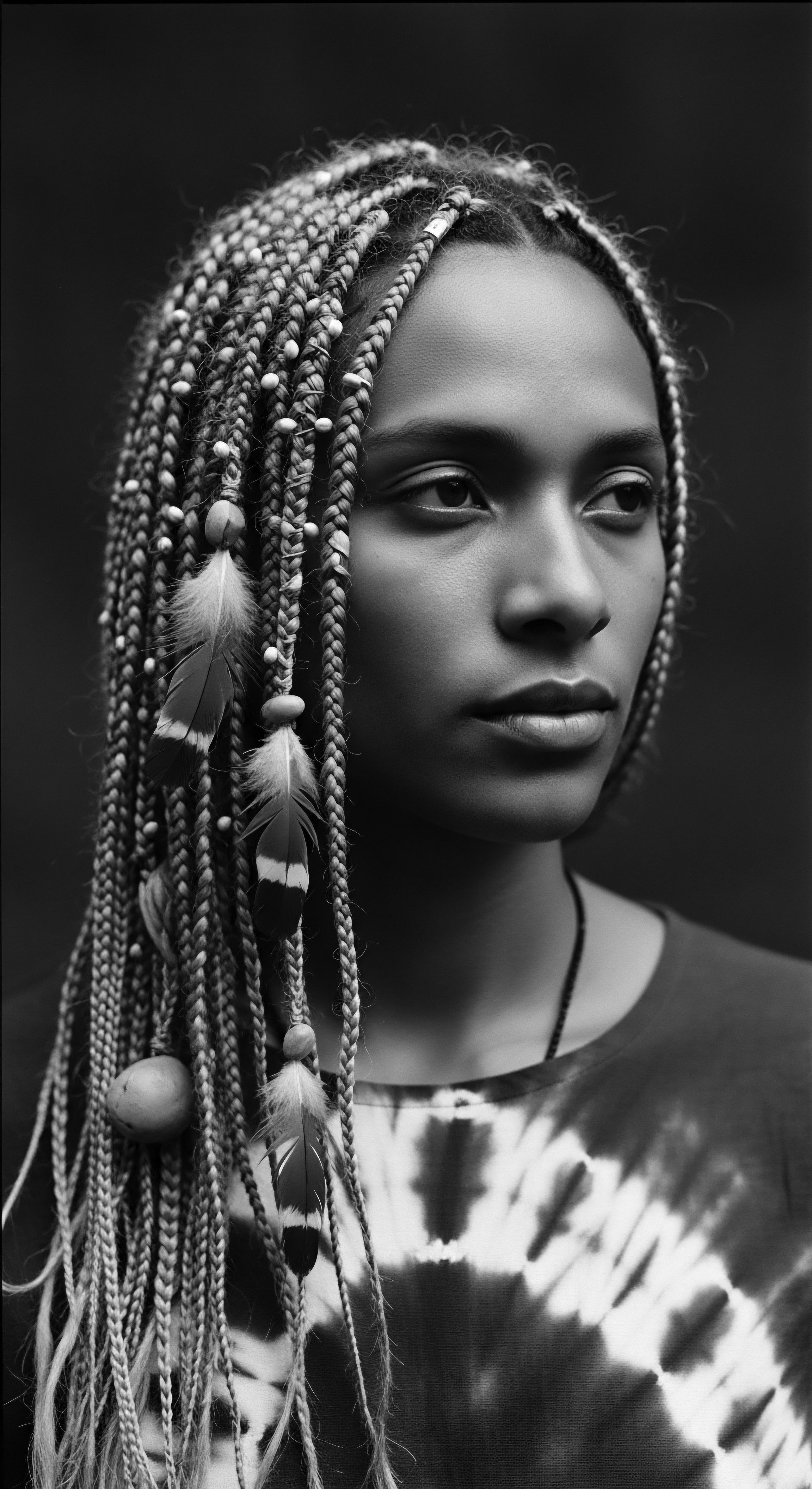
Reflection on the Heritage of Hair Dye
As we conclude this profound meditation on hair dye, a truth becomes abundantly clear ❉ its history is not a linear progression, but a swirling helix of ancestral wisdom, scientific discovery, and unwavering human spirit. From the earliest whispers of ochre on sun-kissed strands to the vibrant spectrum of today’s formulations, the meaning of altering hair’s hue remains deeply intertwined with identity, community, and heritage. It stands as a living testament to humanity’s innate desire to adorn, to communicate, and to claim ownership over one’s visual narrative.
For those with textured hair, particularly within Black and mixed-race communities, the journey of hair dye carries an even more resonant weight. It speaks of resilience in the face of colonial impositions, of resistance through the very act of self-definition, and of a continuous reclamation of ancestral beauty. The rich, varied experiences of using natural pigments or navigating modern chemicals are all threads in this extensive story. This collective memory, preserved in stories and practices, affirms that hair, in every shade and texture, represents a sacred crown, a profound connection to lineage.
The conversation surrounding hair dye today continues to evolve, reflecting a growing appreciation for diversity, health, and ethical practice. It asks us to look back at the elemental biology that shapes each strand, to listen to the echoes from the source where ancient practices first took root, and to recognize the tender thread of care that has always bound communities through shared hair rituals. This ongoing dialogue invites us to consider how our choices today honor the rich tapestry of the past while shaping a future where every individual’s hair story can be celebrated in its authentic splendor. It is a future where the unbound helix of textured hair can truly express its full, vibrant heritage.

References
- Matike, D.M.E. (2010). Indigenous knowledge applied to the use of clays for cosmetic purposes in Africa ❉ an overview. Indilinga African Journal of Indigenous Knowledge Systems, 9 (2), 170-179.
- Byrd, Ayana, and Lori L. Tharps. (2001). Hair Story ❉ Untangling the Roots of Black Hair in America. St. Martin’s Press.
- Rooks, Noliwe M. (1996). Hair Raising ❉ Beauty, Culture, and African American Women. Rutgers University Press.
- Mercer, Kobena. (1994). Welcome to the Jungle ❉ New Positions in Black Cultural Studies. Routledge.
- Patton, Tracey Owens. (2006). African-American Hair as a Communicative Practice. Howard University.
- Gordon, Mark. (1998). The African American Hair Book. Amistad Press.
- Akbar, M.J. (2005). Natural Hair at Home ❉ A Guide to Braiding, Cornrows, Locks, Twists, and More. Citadel Press.
- Sieber, Roy, and Frank Herreman (Eds.). (2000). Hair in African Art and Culture. The Museum for African Art.
- Coombs, Orde. (1992). Hair ❉ A Book of Braiding and Styles. Clarkson Potter.
